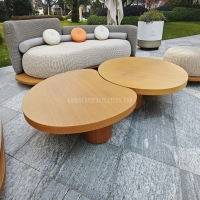Welcome to the website for landscape facilities products and knowledge.
How does the table’s design support the integration of smart technology or IoT devices?
Contemporary table designs have evolved beyond mere surfaces for placing objects, now serving as sophisticated hubs for smart technology integration. Modern smart tables incorporate discreet wireless charging pads that eliminate cable clutter while keeping devices powered throughout the day. Many feature embedded touchscreen interfaces that allow users to control room lighting, temperature, and connected devices directly from the table surface. Advanced models include voice-activated controls compatible with popular virtual assistants, enabling hands-free operation of the workspace environment.
The integration extends to specialized ports and connectivity solutions that support various IoT devices simultaneously. Some innovative designs incorporate weight sensors that can detect when items are placed on the surface, triggering automated responses through connected smart home systems. Cable management systems are seamlessly built into the table's structure, hiding wires while providing easy access to power and data connections.
Manufacturers are implementing modular designs that allow users to upgrade technological components without replacing the entire table. These tables often feature dedicated docking stations for smart home controllers, tablets, and phones, creating a centralized command center. The materials used in construction are carefully selected to ensure they don't interfere with wireless signals while providing durability and aesthetic appeal. This thoughtful integration of technology transforms ordinary tables into intelligent workstations that anticipate and respond to user needs, creating more efficient and connected living and working environments.
Related search:

Recommendation
Elliptical metal outdoor table with nested design, resembling wood grain, round table